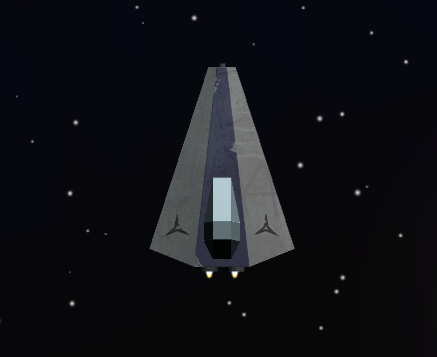Unity Course Community Jam – Player Ship Model
14th February 2018
Although the game I’m creating for the Unity Course Community Jam is inherently 2D in nature, having a fixed, orthographic camera, I wanted to include 3D models. My motivation for this decision is a combination of the fact that I’ve been doing a lot of work in Blender recently creating 3D models, as well as the fact that, to date, I’ve only ever released games featuring 2D drawn sprites. Thus, I felt that this change would both demonstrate my abilities working in 3D and also give this game a different art style to my previous works.
I started by created a very simple model in Blender. I didn’t want to make it too complicated for a large number of reasons, including:
- the model would only be small in the game, so any fine detail wouldn’t be noticeable;
- the lower the number of polygons in a model, the less intensive the model is on hardware;
- the lower the number of polygons in a model, the easier it is to create a UV map for it.
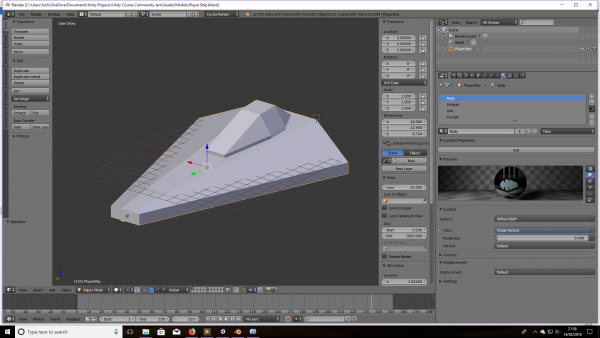
The next step was to ‘unwrap’ the model, which essentially involves creating a flat net for it. This process involves choosing edges of the model to denote as seams, which are essentially points where you’d cut/stick the model together. This results in a UV map. As you can see, the UV map for my player ship model is relatively simplistic.
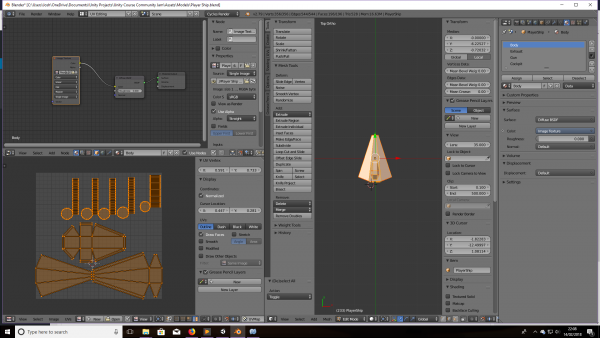
I then imported the UV map into a graphics package to begin creating the textures for the model. In this instance, I used Paint.net, which is a package I am familiar and comfortable working with. I worked in different layers, building up the textures with blocks of colour and the use of grunge maps. This formed my colour texture map, which you can see below.
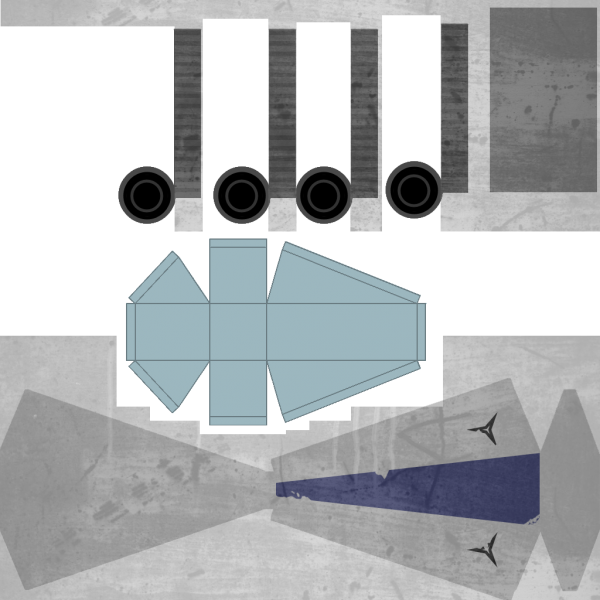
I then imported this into GIMP, a package that I’m less confident with, in order to create a normal map. A normal map essentially ‘fakes’ surface details such as lumps and bumps. Adding this is a model gives it more of a 3D feel without the need to add more detail to the actual model through increasing the polygon count.
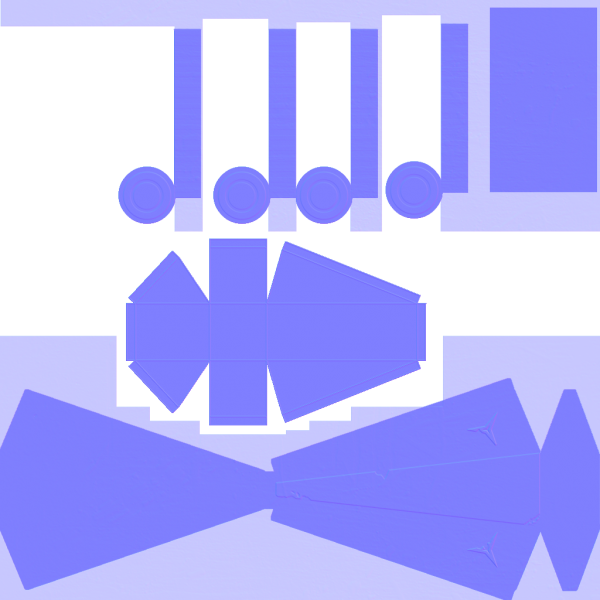
Importing the model into Unity and applying the colour texture map and normal map, here’s the finished game object (including rocket booster particle systems and starfield backdrop!)
